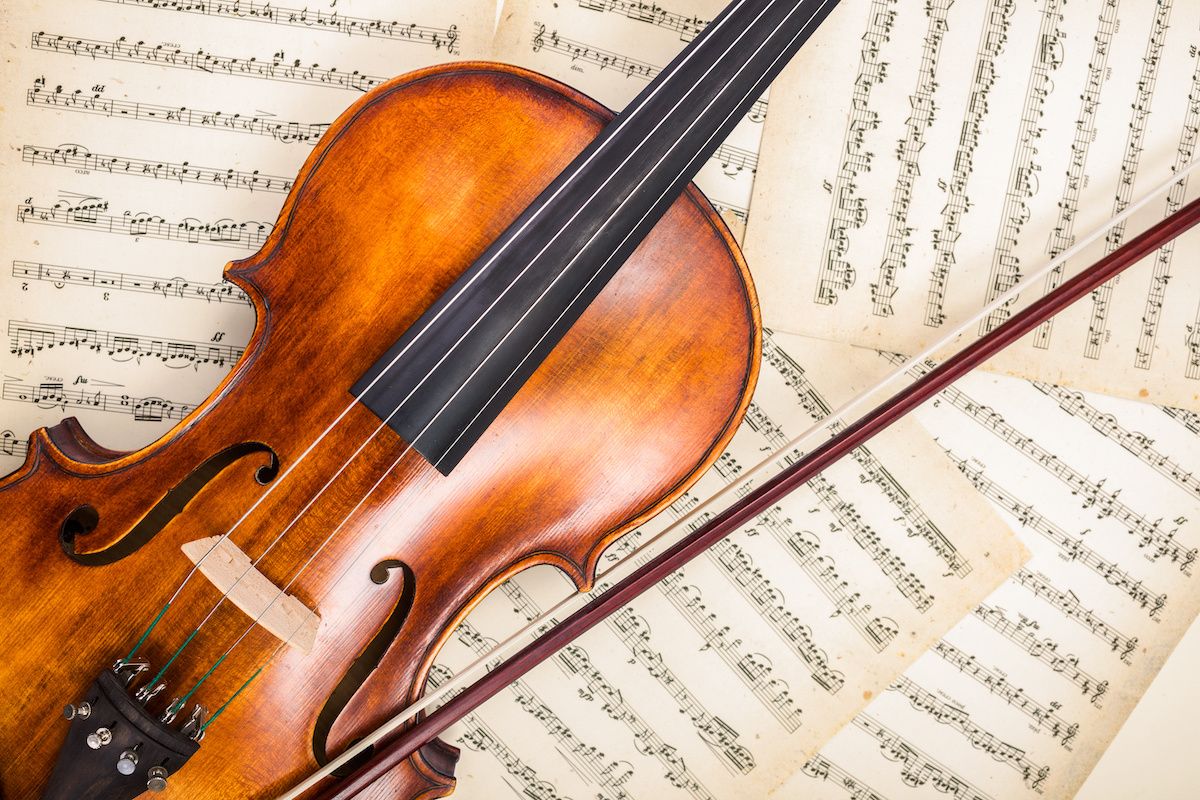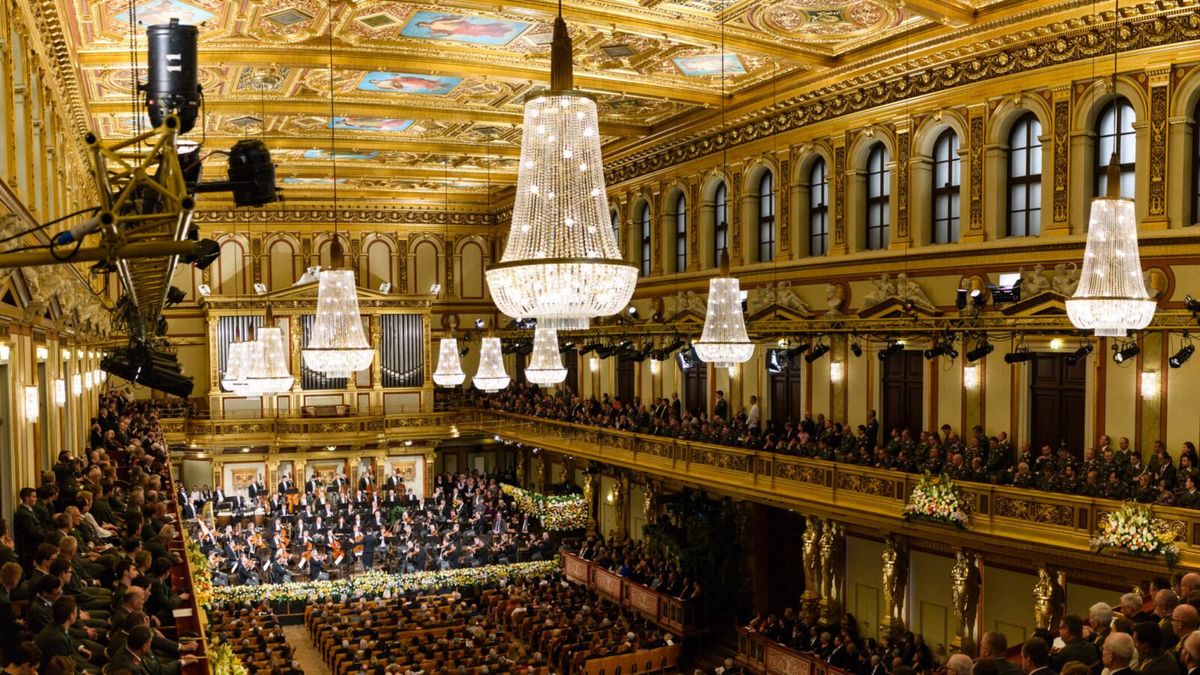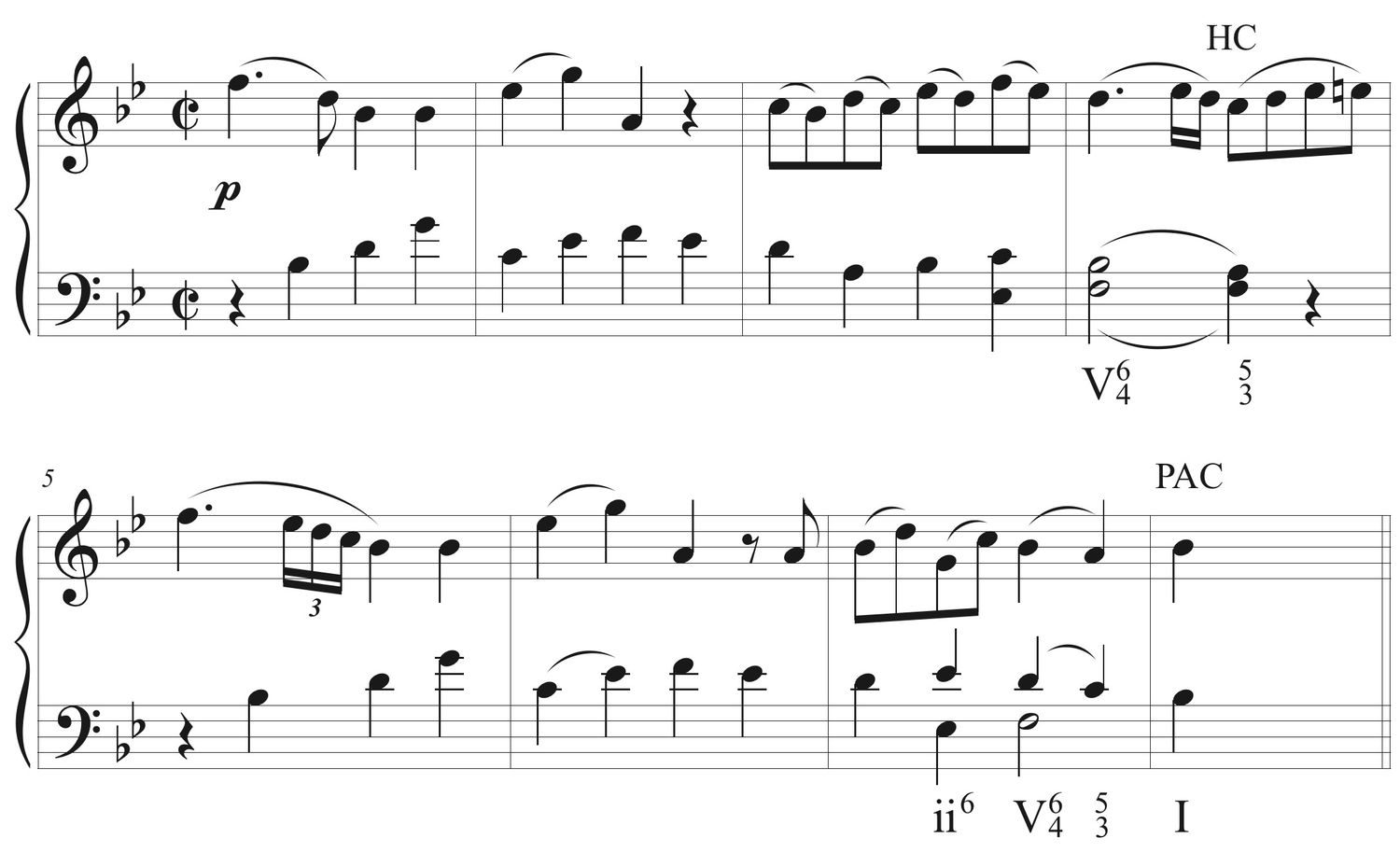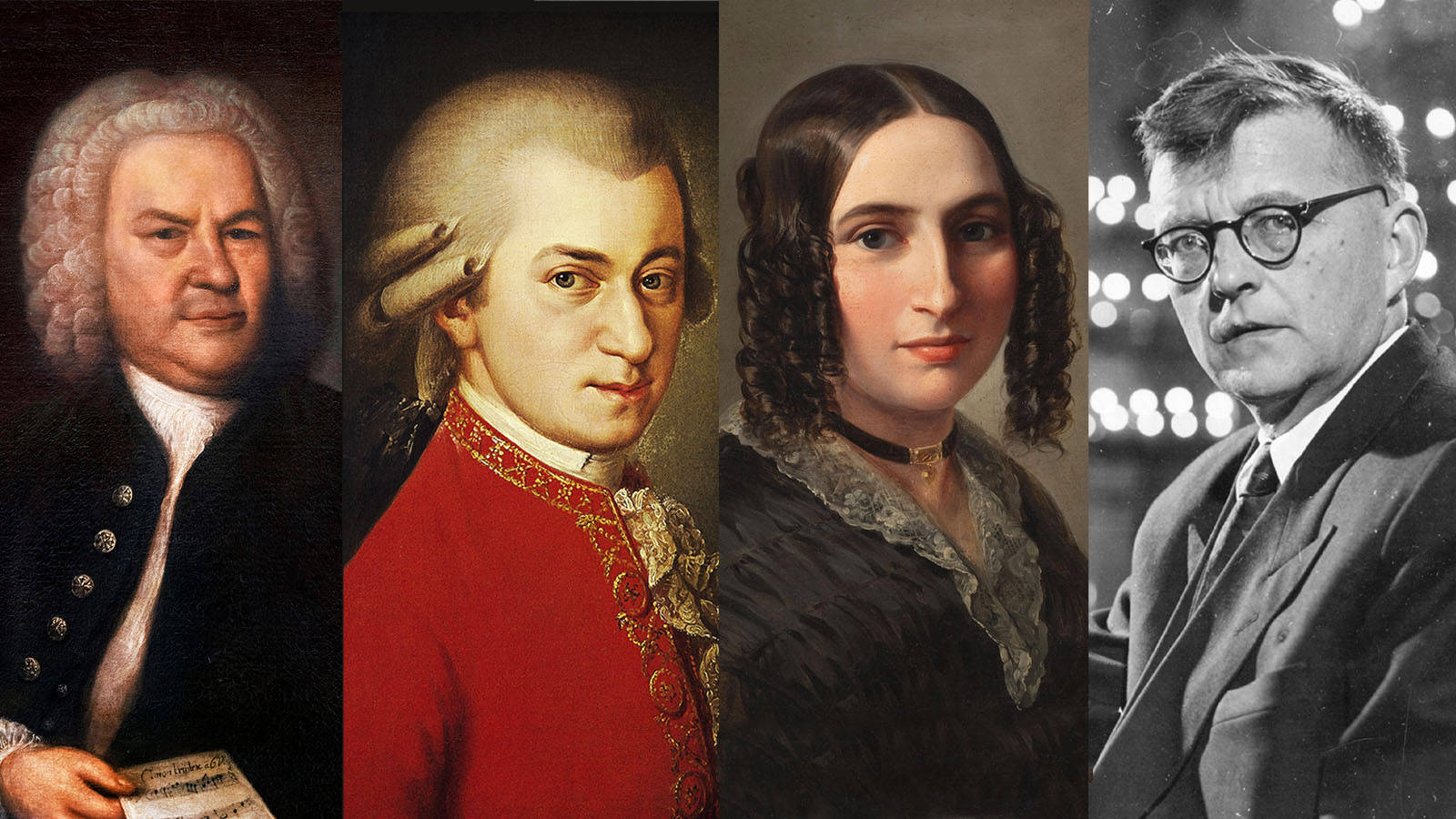Home>Genres>Classical>What Characteristic Is Not Typical Of The Music Of The Classical Period


Classical
What Characteristic Is Not Typical Of The Music Of The Classical Period
Modified: February 24, 2024
Discover what sets the classical music period apart. Explore the characteristics that make classical music unique and why it stands the test of time.
(Many of the links in this article redirect to a specific reviewed product. Your purchase of these products through affiliate links helps to generate commission for AudioLover.com, at no extra cost. Learn more)
Table of Contents
Introduction
The Classical period, which spanned roughly from the mid-18th to the early 19th century, is often regarded as the golden age of classical music. During this time, composers such as Mozart, Haydn, and Beethoven made significant contributions to the genre, creating masterpieces that continue to captivate audiences to this day. The Classical period brought about a shift in musical styles, emphasizing clarity, balance, and restraint.
Classical music possesses distinct characteristics that set it apart from other periods in music history. From the elegance and precision of its compositions to its balanced and symmetrical structures, the essence of this period can be heard and appreciated in its timeless works.
While there are many defining characteristics of Classical music, it is equally important to explore what is not typical of this period. By understanding what separates the Classical period from others, we can gain a deeper appreciation for its unique qualities and the genius of the composers who shaped it.
Background of the Classical Period
The Classical period in music emerged as a response to the extravagance and complexity of the preceding Baroque era. It was a time of enlightenment and rational thinking, which reflected in the music of the period. This era emphasized clarity, simplicity, and emotional restraint, juxtaposed with a focus on structural elements and formal design.
During the Classical period, there was a shift in musical patronage. As opposed to relying solely on the support of the aristocracy and the church, composers began to seek patronage from the rising middle class. This change allowed for greater independence and creative freedom, leading to an increase in public concerts and the establishment of concert halls.
The development of the classical orchestra also played a significant role in shaping the music of this period. Composers began to write specifically for larger orchestras, resulting in the standardization of the symphony, the sonata, and the concerto forms. The symphony orchestra typically consisted of four instrumental families: strings, woodwinds, brass, and percussion. Its balanced and cohesive sound became a hallmark of the Classical period.
Furthermore, the emergence of the pianoforte, a precursor to the modern piano, revolutionized the way composers approached composition. With its dynamic range and expressive capabilities, the pianoforte became an integral part of solo and ensemble works, providing composers with a greater range of tonal possibilities.
Overall, the Classical period marked a significant departure from the ornate and elaborate style of the Baroque. It embraced simplicity, elegance, and balance, setting the stage for a new era of musical genius.
Characteristics of Classical Music
Classical music is defined by several key characteristics that contribute to its distinctive sound and style. These characteristics are essential in understanding and appreciating the music of this period.
1. Clarity and Simplicity: Classical music values clarity and simplicity in its composition. The melodies are often clear and easy to follow, allowing listeners to appreciate the beauty of the music without overwhelming complexity.
2. Balance and Symmetry: Classical pieces are carefully structured, with a strong emphasis on balance and symmetry. They typically follow a concise and logical form, such as sonata form or theme and variations, providing a sense of order and coherence.
3. Emotional Restraint: Classical music is known for its emotional restraint and grace. Unlike the passionate and intense emotions often found in Romantic music, Classical compositions often exhibit a more controlled and refined expression of feelings.
4. Homophonic Texture: Classical music predominantly employs a homophonic texture, where one melodic line takes the lead with the accompaniment providing support and harmony. This texture enhances the clarity and allows each individual voice within the music to be heard distinctly.
5. Contrasting Dynamics: Classical compositions often feature sharp contrasts in dynamics, alternating between soft and loud passages. These dynamic changes add excitement and interest to the music, demonstrating the composer’s mastery in creating tension and release.
6. Use of Classical Forms: The Classical period introduced and refined many musical forms that are still widely used today. These include the sonata, symphony, concerto, and opera, providing composers with defined structures for their compositions.
7. Use of Musical Themes: Classical composers often utilized recurring musical themes in their compositions. These themes would be introduced, developed, and restated throughout a piece, contributing to its overall unity and coherence.
These characteristics collectively contribute to the timeless beauty and elegance of Classical music. They showcase the skillful craftsmanship and creativity of the composers of this period, making their works enduring masterpieces that continue to inspire and captivate audiences.
Notable Composers of the Classical Period
The Classical period produced a remarkable array of composers who made significant contributions to the world of classical music. Their works continue to be celebrated and performed today, showcasing their enduring legacy and influence on future generations. Here are a few of the most notable composers of the Classical period:
1. Wolfgang Amadeus Mozart (1756-1791): Mozart is widely regarded as one of the greatest composers of all time. His prolific output includes symphonies, chamber music, operas, and piano concertos. Known for his exquisite melodies, brilliant harmonies, and emotional depth, Mozart’s music epitomizes the elegance and refinement of the Classical period.
2. Joseph Haydn (1732-1809): Haydn, often referred to as the “Father of the Symphony” and the “Father of the String Quartet,” played a pivotal role in shaping Classical music. He composed over 100 symphonies, numerous chamber music works, and operas. Haydn’s compositions display his mastery of form and structure, showcasing his innovation and creativity.
3. Ludwig van Beethoven (1770-1827): Beethoven bridged the gap between the Classical and Romantic periods, leaving an indelible mark on both. His music is known for its power, intensity, and emotional expressiveness. Beethoven’s symphonies, piano sonatas, and string quartets are considered some of the greatest achievements in the history of Western music.
4. Franz Joseph Haydn (1732-1809): Haydn, known as “Papa Haydn,” was a hugely influential composer during the Classical period. His compositions encompass a wide range of genres, including symphonies, string quartets, piano sonatas, and choral works. Haydn’s music is characterized by its wit, invention, and unique harmonic language.
5. Christoph Willibald Gluck (1714-1787): Gluck was a pivotal figure in the development of opera during the Classical period. He sought to reform opera by focusing on dramatic storytelling and natural expression. Gluck’s most famous works, such as “Orfeo ed Euridice” and “Alceste,” blended lyrical beauty with emotional depth, revolutionizing the operatic genre.
6. Carl Philipp Emanuel Bach (1714-1788): As the son of Johann Sebastian Bach, C.P.E. Bach made significant contributions to the Classical period. He explored new harmonic and emotional territories, bridging the gap between the Baroque and Classical styles. His keyboard works, symphonies, and chamber music showcase his innovative approach and experimental spirit.
These composers, among others, shaped the musical landscape of the Classical period and left an indelible mark on the history of music. Their compositions continue to be admired and studied, reflecting the brilliance and artistry of this extraordinary era.
Identifying Characteristics Not Typical of the Classical Period
While the Classical period is defined by certain characteristics, it is equally important to identify what is not typical of this period. By understanding these contrasting elements, we can further appreciate the unique qualities and innovations of the Classical period. Here are a few characteristics that are not commonly associated with Classical music:
1. Excessive Ornamentation: Unlike the richly ornamented melodies and intricate embellishments of the Baroque period, Classical music favors a more straightforward and restrained approach. It places emphasis on clear melodies and harmonies, avoiding excessive ornamentation that could distract from the overall elegance and clarity of the composition.
2. Extreme Emotionalism: Classical music tends to exhibit emotional restraint and a sense of balance. While it can convey a range of emotions, it often does so in a controlled and refined manner. The intense passion and extreme emotionalism characteristic of the Romantic period, for example, are not typically found in Classical compositions.
3. Radical Harmonic Departures: Classical music generally adheres to traditional tonal harmony, with a focus on well-structured chords, progressions, and modulations. While it does incorporate modulation to explore different key areas, the radical harmonic departures and adventurous chromaticism associated with the Romantic period are not typical of the Classical style.
4. Lengthy and Dramatic Slow Movements: While slow movements have their place in Classical compositions, they are not typically as extensive or emotionally introspective as those found in later periods. Classical slow movements often maintain a sense of elegance and grace, focusing more on melodic beauty and simplicity rather than dramatic depth.
5. Programmatic Music: Unlike the Romantic period, where programmatic music often tells a specific story or depicts a scene or emotion, Classical music tends to be more abstract. It prioritizes formal structures and thematic development rather than illustrating specific narratives or ideas.
While these characteristics are not entirely absent from the Classical period, they are less prevalent and define other periods of music history. Recognizing these differences allows us to appreciate and differentiate the distinct qualities that make Classical music so remarkable.
Conclusion
The Classical period of music stands as a timeless testament to the elegance, clarity, and balance that defined an era of musical genius. Composers such as Mozart, Haydn, Beethoven, and many others crafted compositions that continue to captivate audiences with their refined melodies, structured forms, and emotional restraint. This period marked a departure from the elaborate ornamentation of the Baroque era and laid the foundation for the expressive Romantic period that followed.
By understanding the characteristics that define Classical music, we gain a deeper appreciation for its unique qualities. The emphasis on clarity and simplicity, the adherence to structural balance, the emotional restraint, and the exploration of standardized forms all contribute to the enduring appeal of the Classical period.
At the same time, recognizing the attributes not typically associated with the Classical period allows us to appreciate the boundaries that composers of this era intentionally set. The Classical period diverges from excessive ornamentation, extreme emotionalism, radical harmonic departures, lengthy and dramatic slow movements, and programmatic storytelling found in later periods, giving it a distinct identity and style.
Together, these contrasting characteristics and defining attributes not only showcase the brilliance and artistry of the composers of the Classical period but also highlight the evolutionary nature of music. The Classical period stands as a significant milestone that bridged the gap between the Baroque and Romantic periods, leaving an indelible mark on the history of music.
So, the next time you listen to a symphony, a sonata, or a concerto from the Classical period, take a moment to appreciate the clarity, balance, and restraint that define these compositions. Immerse yourself in the elegance and timeless beauty of the music, and let the melodies transport you to a time when the genius of Mozart, Haydn, Beethoven, and their contemporaries flourished.











